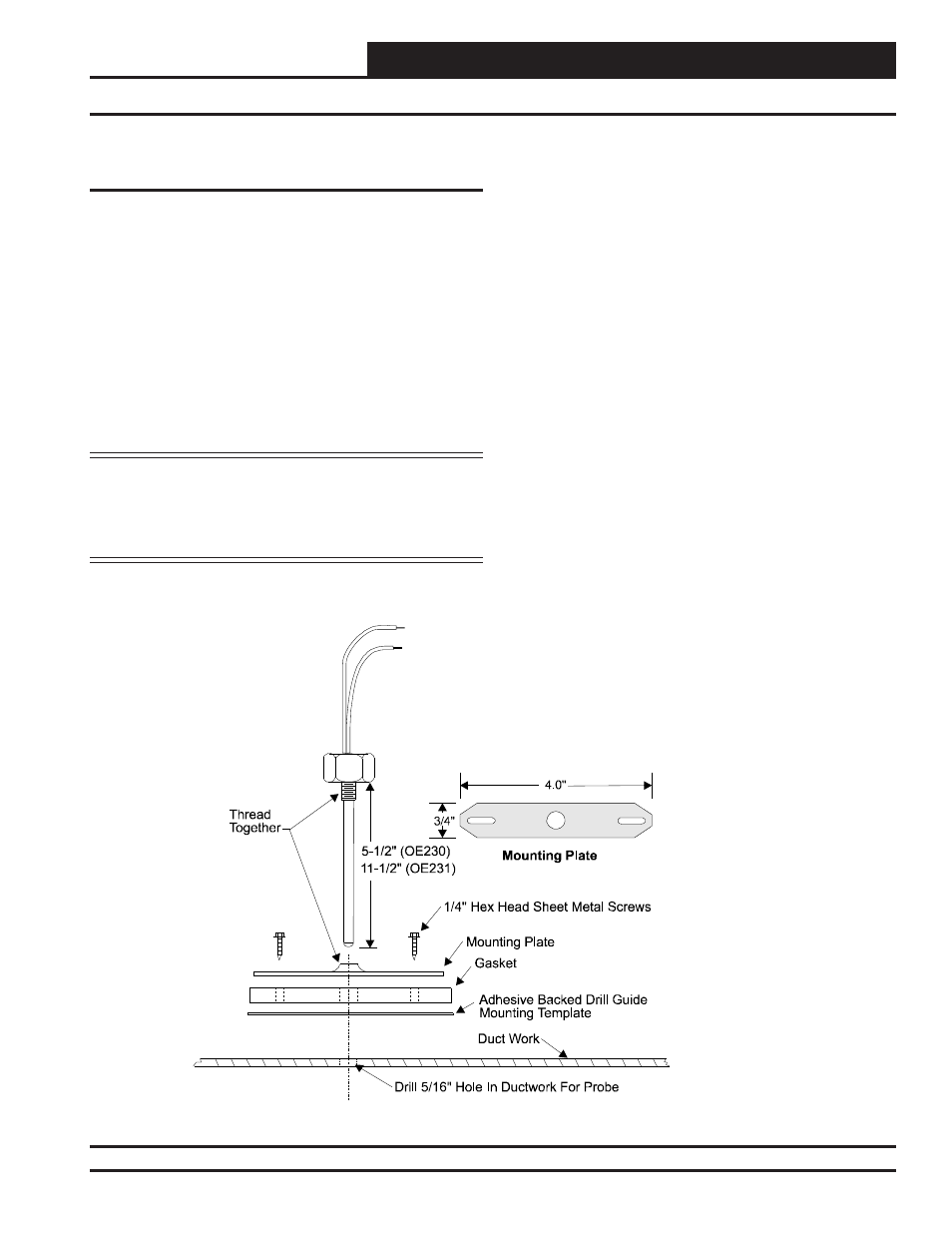Appendix a, Supply air temperature sensor installation – Orion System MODGAS-X User Manual
Page 23

MODGAS-X Field Technical Guide
APPENDIX A
23
Supply Air Temperature Sensor Installation
Mounting the Supply Air Temperature
Sensor
•
The Supply Air Temperature (SAT) Sensor should be
located in the duct-work downstream of the unit supply
air
connection.
•
Locate the sensor in the center of the widest part of the
duct. Use the supplied template and a 5/16” drill to make
a hole for the sensor.
•
Install the gasket over the probe and mount securely to
the duct using the supplied sheet metal screws. Be sure
the gasket is compressed to provide an air tight seal.
•
For best accuracy, apply insulation on the outside of the
duct, over the sensor. This will help prevent thermal
gradients from affecting the sensor.
WARNING: Make sure your Supply Air Temperature
Sensor is mounted and wired according to
these instructions prior to testing the unit or
else the modulating valve will not control
properly and may damage your equipment.
Figure 12: Supply Air Temperature Sensor Installation
Leads Are Non-Polarized. Butt Splice Leads
To 24 Gauge Wire Minimum.
In Stand Alone Applications And In Retrofit
Applications, Connect Leads to “SAT” And “GND” On
MODGAS-X Controller. See
.
If Using A VCM-X, SA, RNE, Or VCB-X Controller,
Connect Leads To “AI2” And “GND” On Main Controller.
Table 7, Page 24
Stand-Alone Mode
In Stand-Alone Mode, the SAT Sensor is connected to the MODGAS-
X Controller. If, in Stand-Alone Mode, the MODGAS-X Controller
is used in conjunction with a Stand-Alone MHGRV Controller, the
SAT sensor is shared between the two controllers and always attaches
to the MODGAS-X Controller.
See Table 8, page 24 for SAT Options Jumper Settings and see
Figures 2, 4, and 5 - 8 for wiring. See Table 7, page 24 for details
about retrofi t applications.
Communication Mode
When communicating with AAON Unit Controllers, the SAT Sensor
will be connected to the Main Controller. The exception would be
in retrofi t applications with older controllers. See Table 9, page 24
for SAT Options Jumper Settings and see Figures 3 & 9 for wiring.
See Table 7, page 24 for details about retrofi t applications.
